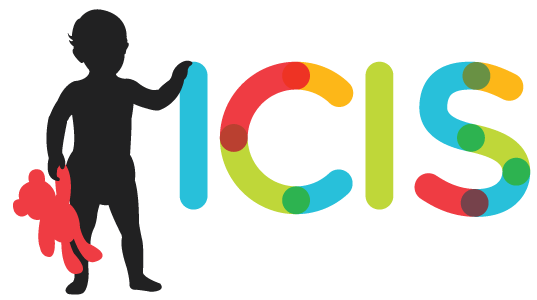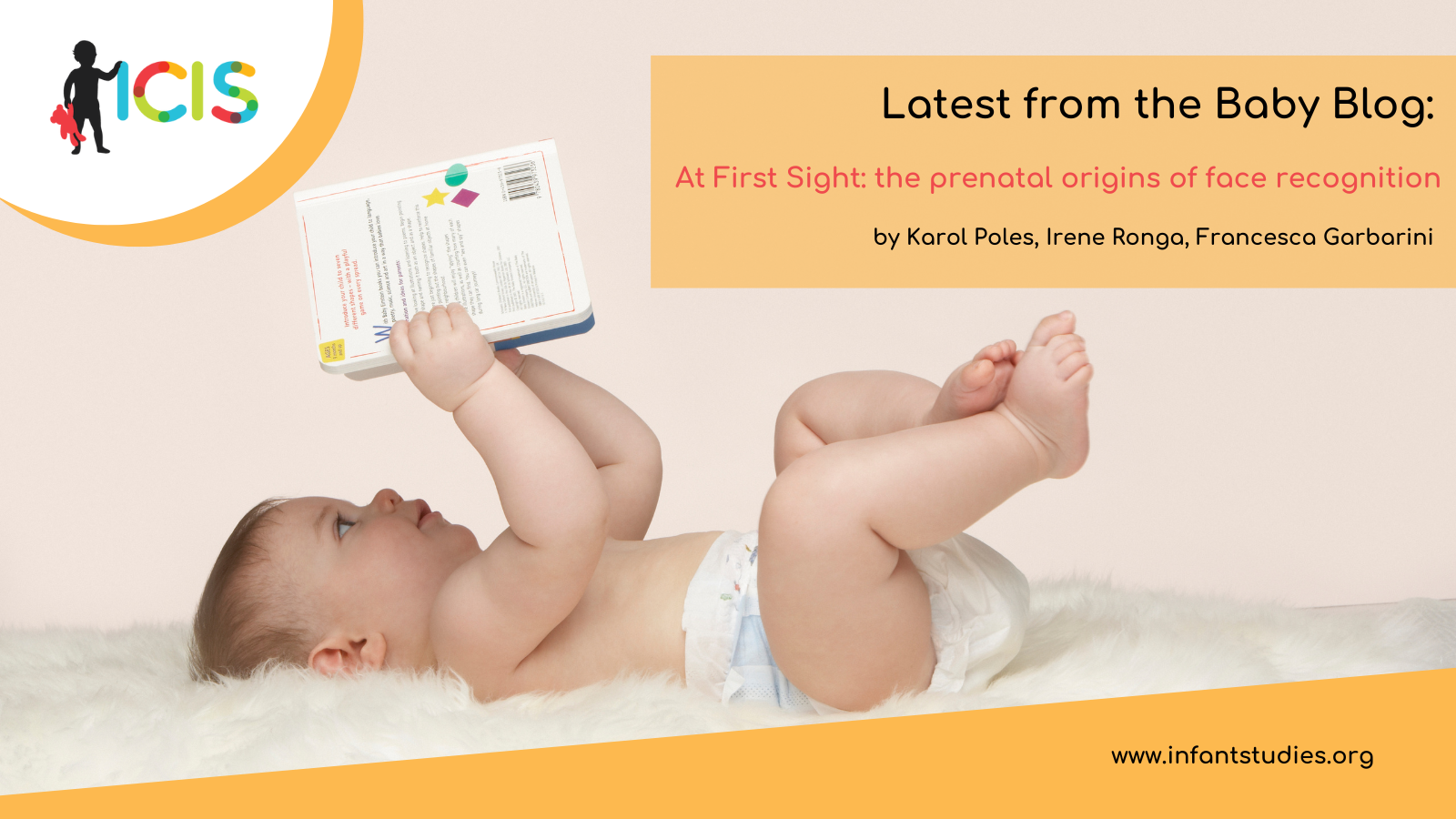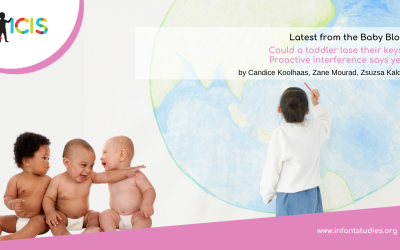Previous studies have shown that human newborns and infants prefer simple, schematic face-like patterns (three dots arranged in a triangular configuration resembling two eyes and a mouth) over equally complex stimuli displaced in a neutral configuration (the same three dots arranged in an inverted pattern)1-4. This ability is not unique to humans, but appears to be common across other species as well, including non-human primates5, chicks6, and even turtles7, suggesting it may have deep evolutionary roots.
But when, precisely, does this preference for face-like stimuli begin?
Recent research suggests that fetuses, while still in the womb, may already have the ability to differentially respond to and prioritize face-like patterns over other visual stimuli.8,9 A pioneering study by Reid and colleagues (2017), using 4D ultrasound scans, demonstrated that third-trimester fetuses preferentially orient their heads toward light patterns resembling faces8.
A new study by Ronga and colleagues (2025), has recently replicated this research using a different methodological approach.10 The researchers questioned whether the preference for face-like stimuli observed in fetuses’ head movements could be observed using an alternative measure, namely, the fetal eye-lens[1] movements.
The monitoring of eye movements and gaze behavior is already widely used in studies of infants after birth.11-13 In fact, several studies have exploited looking preference paradigms to measure infants’ attention orienting to external events, showing a preference for face-like stimuli at birth.1-4,13 In our recent prenatal study, we utilised eye movements – rather than head movements – to measure looking preference, allowing for maximum comparability between pre- and postnatal studies. This experimental approach consists of examining, via 2D ultrasound imaging, fetal gaze responses to visual stimuli projected through the mother’s abdomen to further investigate fetal preferential engagement with face-like stimuli.
The study also addresses two other key questions: When does the ability to discriminate such salient visual stimuli emerge? And in relation to which neural structure?
To answer these questions, we tested fetuses at various time-points during the third trimester: on average, at 26, 31, and 37 weeks of gestation. Moreover, we examined, at each time-point, correlational effects with neurodevelopmental parameters, such as the growth of the thalamic nuclei and the insula, as well as the thickness of the cortical layers.
The results confirm previous findings, suggesting that the ability to visually differentiate between face-like and non-face-like stimuli is already present before birth. Further, even though a greater number of lens movements are performed overall at both 31 and 37 weeks of gestation versus 26 weeks of gestation, fetuses already showed a preference for face-like configurations at 26 weeks, the very beginning of the third trimester.
Although only exploratory, of particular interest are the results from the anatomical data. Specifically, we observed a correlation between the growth of the thalamic nuclei and the strength of the face-like preference at 26 weeks. This finding might be considered as a preliminary indication that, at the beginning of the third trimester – when the thalamocortical pathway has just established and the visual cortical layers are not fully developed14,15 – the thalamic nuclei, once sufficiently developed, may represent a key neural structure for face‐like preference.
While our study did not directly compare face-like and top-heavy non-face-like stimuli, previous research in newborns (e.g., Buiatti et al., 2019) suggests that the preference is specific to face-like configurations. Investigating whether this distinction is already present before birth is an important direction for future research.
In sum, this research provides compelling evidence that certain aspects of visual recognition and brain development are already underway in the womb. Accordingly, the study indicates that fundamental aspects of visual processing begin taking shape prenatally, laying the groundwork for further postnatal development.
The idea that fetuses already pay more attention to face-like configurations is both intriguing and profound. However, further studies are necessary to fully understand the underlying neural mechanisms and the complex processes that shape prenatal vision: the very same processes that ultimately enable us, from the very beginning, to connect with others by seeking their gaze.
References
- Morton, J. , and Johnson M. H.. 1991. “CONSPEC and CONLERN: A Two‐Process Theory of Infant Face Recognition.” Psychological Review 98, no. 2: 164–181. 10.1037/0033-295x.98.2.164.
- Valenza, E. , Simion F., Cassia V. M., and Umiltà C.. 1996. “Face Preference at Birth.” Journal of Experimental Psychology. Human Perception and Performance 22, no. 4: 892–903. 10.1037//0096-1523.22.4.892.
- Cassia, V. M. , Turati C., and Simion F.. 2004. “Can a Nonspecific Bias Toward Top‐Heavy Patterns Explain Newborns’ Face Preference?” Psychological Science 15, no. 6: 379–383. 10.1111/j.0956-7976.2004.00688.x.
- Farroni, T. , Johnson M. H., Menon E., Zulian L., Faraguna D., and Csibra G.. 2005. “Newborns’ Preference for Face‐Relevant Stimuli: Effects of Contrast Polarity.” Proceedings of the National Academy of Sciences 102, no. 47: 17245–17250. 10.1073/pnas.0502205102.
- Sugita, Y. 2008. “Face Perception in Monkeys Reared With no Exposure to Faces.” Proceedings of the National Academy of Sciences 105, no. 1: 394–398. 10.1073/pnas.0706079105.
- Di Giorgio, E. , Loveland J. L., Mayer U., Rosa‐Salva O., Versace E., and Vallortigara G.. 2017. “Filial Responses as Predisposed and Learned Preferences: Early Attachment in Chicks and Babies.” Behavioural Brain Research 325, no. Pt B: 90–104. 10.1016/j.bbr.2016.09.018.
- Versace, E. , Damini S., and Stancher G.. 2020. “Early Preference for Face‐Like Stimuli in Solitary Species as Revealed by Tortoise Hatchlings.” Proceedings of the National Academy of Sciences 117, no. 39: 24047–24049. 10.1073/pnas.2011453117.
- Reid, V. M. , Dunn K., Young R. J., Amu J., Donovan T., and Reissland N.. 2017. “The Human Fetus Preferentially Engages With Face‐Like Visual Stimuli.” Current Biology: CB 27, no. 13: 2052. 10.1016/j.cub.2017.06.036.
- Reissland, N. , Wood R., Einbeck J., and Lane A.. 2020. “Effects of Maternal Mental Health on Fetal Visual Preference for Face‐Like Compared to Non‐Face Like Light Stimulation.” Early Human Development 151: 105227. 10.1016/j.earlhumdev.2020.105227.
- Ronga, I., Poles, K., Pace, C., Fantoni, M., Luppino, J., Gaglioti, P., Todros, T., & Garbarini, F. (2025). At First Sight: Fetal Eye Movements Reveal a Preference for Face-Like Configurations From 26 Weeks of Gestation. Developmental science, 28(2), e13597. https://doi.org/10.1111/desc.13597
- Smith, N. A., Gibilisco, C. R., Meisinger, R. E., & Hankey, M. (2013). Asymmetry in infants’ selective attention to facial features during visual processing of infant-directed speech. Frontiers in psychology, 4, 601. https://doi.org/10.3389/fpsyg.2013.00601
- Filippetti, M. L., Johnson, M. H., Lloyd-Fox, S., Dragovic, D., & Farroni, T. (2013). Body perception in newborns. Current biology : CB, 23(23), 2413–2416. https://doi.org/10.1016/j.cub.2013.10.017
- Johnson, M. H. , Senju A., and Tomalski P.. 2015. “The Two‐Process Theory of Face Processing: Modifications Based on Two Decades of Data From Infants and Adults.” Neuroscience & Biobehavioral Reviews 50: 169–179. 10.1016/j.neubiorev.2014.10.009.
- Kostović, I. , and Judas M.. 2010. “The Development of the Subplate and Thalamocortical Connections in the Human Foetal Brain.” Acta Paediatrica (Oslo, Norway: 1992) 99, no. 8: 1119–1127. 10.1111/j.1651-2227.2010.01811.x.
- Frohlich, J. , Bayne T., Crone J. S., et al. 2023. “Not With a “Zap” But With a “Beep”: Measuring the Origins of Perinatal Experience.” Neuroimage 273: 120057. 10.1016/j.neuroimage.2023.120057.
- Buiatti M, Di Giorgio E, Piazza M, Polloni C, Menna G, Taddei F, Baldo E, Vallortigara G. Cortical route for facelike pattern processing in human newborns. Proc Natl Acad Sci U S A. 2019 Mar 5;116(10):4625-4630. doi: 10.1073/pnas.1812419116. Epub 2019 Feb 12. PMID: 30755519; PMCID: PMC6410830.
- [1] Eye movements refer to the movement of the entire eyeball within the orbit. Due to its highly echogenic appearance on 2D ultrasound, the crystalline lens of the fetal eye can serve as a visible marker for detecting eyeball motion. Thus, the movements of the eye lenses, which occur as a consequence of eyeball motion, were examined as an indicator of eye displacement.
About the Author

Karol Poles
University of Turin
Karol Poles is a Ph.D. Student in Neuroscience at the University of Turin. Her research focuses on the emergence of bodily representation during the perinatal period, investigating the multisensory and sensorimotor experiences that contribute to the development of an “embodied” Self. As part of her doctoral work, she explores fetal and neonatal responses to external stimuli –such as visual, auditory, and vibrotactile stimulations– to better understand the early foundations of bodily representation, including multisensory integration, perception-action coupling, sense of agency, and body ownership.

Irene Ronga
University of Turin
Irene Ronga, Ph.D., is a researcher at the Department of Psychology at the University of Turin, where she teaches Psychological Neuroscience. Her research focuses on learning mechanism, brain plasticity, and change processes. Recently, together with Francesca Garbarini’s research group, Irene has been working on a new line of research on the development of implicit learning processes and brain plasticity in early infancy and the prenatal period.

Francesca Garbarini
University of Turin
Francesca Garbarini, Ph.D., is a Professor of Neuropsychology and Cognitive Neuroscience at the University of Turin. Her research interests primarily focus on motor and bodily awareness and their neural bases. In her experimental approach, she combines the study of motor and bodily awareness in normal and pathological contexts with the use of neuroimaging and electrophysiological techniques. Recently, she started working on a new line of research focused on the development of neural mechanisms underlying bodily awareness throughout prenatal and postnatal life.




